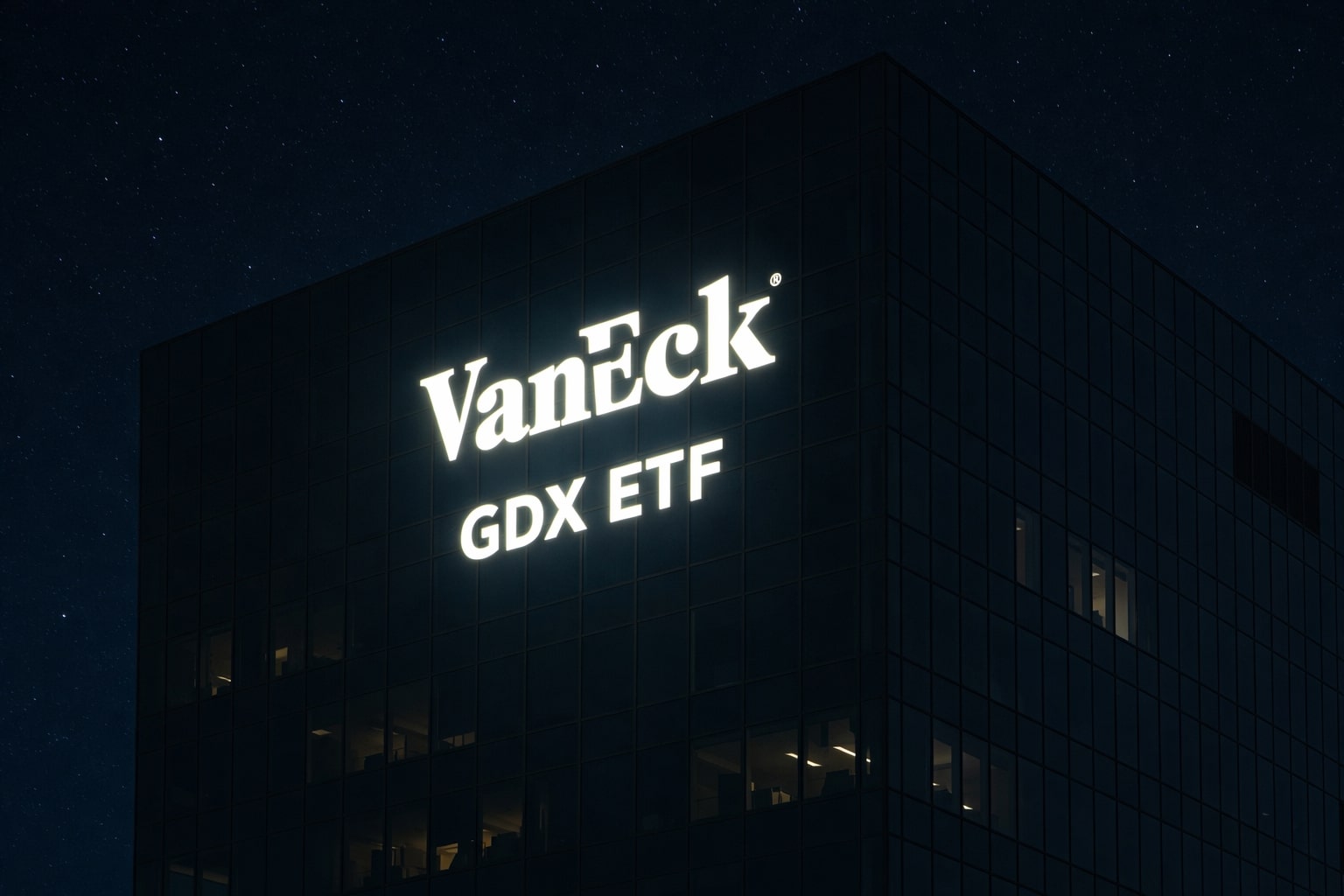
Bitcoin's Dominance Matters, 2 Year High, Commanding 48% of Crypto Market
Bitcoin's Performance, Regulatory Landscape, and DeFi Integration
Bitcoin (BTC-USD), the world's largest cryptocurrency by market capitalization, has experienced a turbulent week but managed to recover some of its losses on the back of positive news. This article examines the recent developments impacting Bitcoin's performance, including regulatory concerns and the potential implications of BlackRock's filing for a bitcoin exchange-traded fund (ETF). Additionally, we analyze the dominance of Bitcoin in the market and its correlation with other assets, along with the potential impact of the Federal Reserve's monetary policy decisions. Furthermore, we discuss the ongoing challenges faced by the crypto industry and provide an update on the outlook for Bitcoin and altcoins.
Bitcoin Gains Ground on BlackRock's ETF Filing:
Bitcoin's weekly losses were mitigated by optimism surrounding BlackRock's filing for a bitcoin ETF with the U.S. Securities and Exchange Commission (SEC). The world's largest asset manager's proposal, known as the iShares Bitcoin Trust, aims to establish the first publicly traded spot bitcoin ETF in the country. Coinbase has been named as the custodian for the ETF's holdings. If approved, this development could significantly boost the adoption and accessibility of bitcoin as an investment instrument.
Regulatory Concerns Weigh on Bitcoin:
Earlier in the week, Bitcoin faced downward pressure due to ongoing concerns over regulatory crackdowns. The SEC's lawsuits against major crypto exchanges Binance and Coinbase heightened market uncertainty. However, a district judge's suggestion for Binance and the SEC to discuss a potential resolution provided some respite. Regulatory actions continue to be a significant factor influencing the crypto market, and investors are closely monitoring how BlackRock's ETF filing progresses amidst the SEC's intensified scrutiny.
Federal Reserve's Impact on Bitcoin:
The Federal Reserve's decision to hold interest rates steady for the first time in 15 months had mixed implications for Bitcoin. While the pause in rate hikes provided short-term relief, the central bank's dot plot indicated potential future rate increases. This development could exert pressure on cryptocurrencies, including Bitcoin, as they often perform well in a low-interest-rate environment. Analysts have highlighted the importance of monitoring the Federal Reserve's monetary policy decisions and their potential effects on digital assets.
Bitcoin Dominance and Market Performance:
Bitcoin's dominance in the cryptocurrency market has reached a two-year high, currently standing at around 48% against all cryptos and nearly 96% against proof-of-work coins. This trend is significant, considering Bitcoin's strong performance and its ability to outperform altcoins during market downturns. The increased dominance underscores the flight to safety and investors' preference for larger, more established assets like Bitcoin. Furthermore, Bitcoin has shown a negative correlation with equities since mid-May, suggesting potential divergent price movements.
Outflows and Liquidity Challenges:
CoinShares' report indicates that digital asset investment products experienced capital flight for the eighth consecutive week, totaling $88 million. North American investors have been withdrawing funds from crypto investment products, reflecting cautious sentiment and concerns over the impact of the Federal Reserve's potential rate hikes. Additionally, liquidity challenges persist within the crypto industry, with potential implications for Bitcoin's price. Lower liquidity, combined with regulatory uncertainties, may put downward pressure on Bitcoin's value.
Bitcoin Halving Cycle and Long-term Outlook:
The upcoming halving of Bitcoin mining rewards, scheduled for 2024, has historically been associated with positive price movements. However, it remains uncertain whether this event alone can drive significant price appreciation. Factors such as liquidity, demand, and regulatory developments are likely to play crucial roles in shaping Bitcoin's future trajectory. While Bitcoin has performed well in 2023, declining liquidity and potential overvaluation pose challenges to sustained growth.
Bitcoin's recent performance has been influenced by a combination of regulatory concerns, market volatility, and the impact of BlackRock's ETF filing. The dominant cryptocurrency has shown resilience amidst challenges, benefiting from positive news while contending with regulatory uncertainties. Bitcoin's increased dominance and negative correlation with equities suggest a flight to safety and potential divergent price movements. However, liquidity challenges and the evolving regulatory landscape pose risks to Bitcoin's long-term outlook. As investors navigate these complexities, monitoring regulatory developments, market trends, and fundamental factors will be critical to understanding Bitcoin's future performance.
Bitcoin's Limited Presence in DeFi: While Bitcoin is the most recognized and valuable cryptocurrency, it has had limited participation in the DeFi ecosystem compared to other digital assets like Ethereum (ETH-USD). This is primarily due to Bitcoin's design as a store of value rather than a programmable platform. Ethereum's smart contract functionality has enabled the creation of DeFi protocols, such as decentralized exchanges, lending platforms, and yield farming opportunities, which are more aligned with its capabilities.
Wrapped Bitcoin (WBTC) and Bitcoin on Layer 2: To bridge the gap between Bitcoin and DeFi, projects like Wrapped Bitcoin (WBTC) have emerged. WBTC is an ERC-20 token backed by Bitcoin, allowing users to access Bitcoin's value within the Ethereum ecosystem. This has facilitated Bitcoin's integration into DeFi protocols, enabling users to leverage their Bitcoin holdings for various decentralized financial activities. Additionally, layer 2 solutions, such as the Lightning Network, aim to enhance Bitcoin's scalability and speed, potentially enabling faster and more cost-effective transactions for DeFi applications.
Liquidity Mining and Yield Opportunities: Liquidity mining, a key feature of DeFi platforms, presents an opportunity for Bitcoin holders to earn additional income. By providing liquidity to decentralized exchanges or lending platforms, users can earn interest or receive governance tokens as rewards. While Ethereum-based DeFi protocols dominate the liquidity mining landscape, there are emerging projects exploring Bitcoin-centric liquidity mining initiatives. These developments could incentivize Bitcoin holders to actively participate in DeFi and tap into additional yield opportunities.
Cross-Chain Solutions and Interoperability: As the DeFi space expands, the need for cross-chain solutions and interoperability becomes crucial. Bitcoin's compatibility with different blockchain networks, such as Ethereum, Polkadot, or Cosmos, can enable seamless asset transfers and interactions between different DeFi ecosystems. Projects like RenBTC and tBTC are working towards creating trustless bridges between Bitcoin and other blockchains, allowing users to utilize Bitcoin's value across multiple networks.
Enhancing Financial Inclusion and Accessibility: DeFi's underlying principles of decentralization and permissionless access align with Bitcoin's ethos of financial inclusion. By integrating Bitcoin into DeFi platforms, individuals worldwide can leverage their Bitcoin holdings to access financial services without relying on traditional intermediaries. This can potentially unlock new avenues for borrowing, lending, and investment opportunities, particularly in regions with limited banking infrastructure.
Regulatory and Security Considerations: As Bitcoin increasingly interacts with DeFi protocols, regulatory and security considerations become paramount. Regulatory scrutiny surrounding DeFi platforms and associated risks may impact Bitcoin's integration and participation. Balancing innovation with compliance will be crucial to ensure the long-term viability and adoption of Bitcoin within the DeFi space. Furthermore, safeguarding user funds and maintaining the security of Bitcoin's underlying blockchain infrastructure are essential to foster trust and confidence in DeFi applications.
Read More
-
GDX ETF at $88 While Gold Tests $4,400: Are Gold Miners Poised for $100?
19.12.2025 · TradingNEWS ArchiveStocks
-
XRP ETF Boom: XRPI at $10.94 and XRPR at $15.49 as XRP-USD Clings to the $1.80–$1.90 Zone
19.12.2025 · TradingNEWS ArchiveCrypto
-
Natural Gas Price Forecast: NG=F Hovering Near $3.92 As Weather, LNG And Storage Collide
19.12.2025 · TradingNEWS ArchiveCommodities
-
USD/JPY Price Forecast - Dollar to Yen Near 157 as BoJ’s 0.75% Rate Hike Backfires on the Yen
19.12.2025 · TradingNEWS ArchiveForex

















